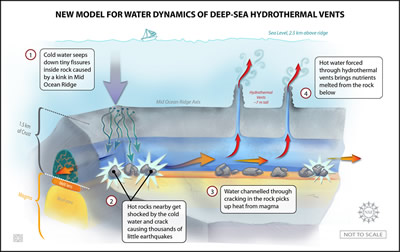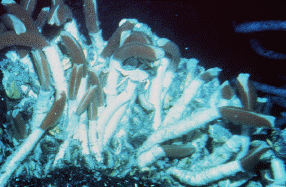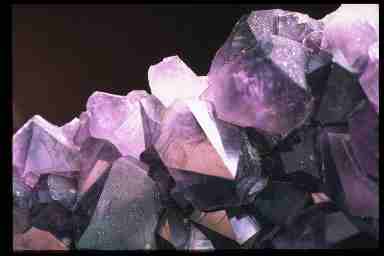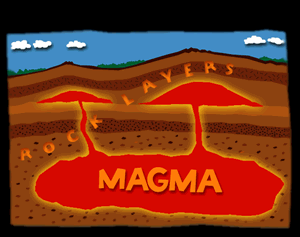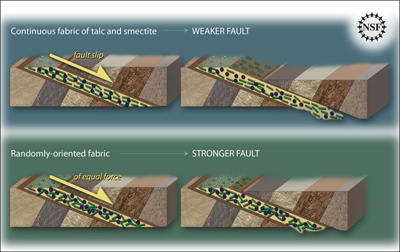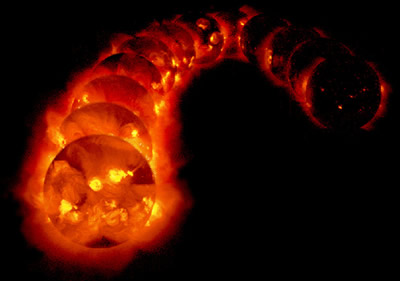Click on image for full size
Courtesy of Zina Deretsky/National Science Foundation
Earthquakes Under Pacific Ocean Floor Reveal Unexpected Circulation System
News story originally written on January 11, 2008
The Earth has a large system of ridges along the ocean floor that play a big part in the geology of the planet. A team of seismologists (geologists who study earthquakes) has been studying a place called the East Pacific Rise, which is in the ocean floor about 565 miles southwest of Acapulco, Mexico. These scientists have made images of this area and have made some discoveries that change what they thought they knew about these ridges and vents on the ocean floor.
In the late 1970s scientists discovered a large plumbing system under the oceans called hydrothermal vents. These systems pull in cold water, heat the water, and then spit it back out from vents in the seafloor. This process brings up hot water and substances that dissolved from rocks below the ocean floor. Some rare life forms feed off this "stew" of dissolved minerals and hot water.
Scientists used to think that pressure forced the water into the vents through large faults, or cracks in the ridge. Now scientists have learned that the water moves a lot faster in and out of the vents than they had thought (maybe a billion gallons per year!). The water goes down through a large chimney that is buried under the sea floor. Then the water runs underneath the ridge through a tunnel above a hot magma chamber. Finally the water bubbles back up through vents that are further down the ridge.
They have also learned that tiny earthquakes on the ridge are created by the cold water passing through hot rocks and picking up their heat. This process shrinks the rocks and cracks them, creating small quakes. Then seawater is forced down into the new spaces made by the earthquakes. This water gets heated by the magma and rises back to the seafloor. Maya Tolstoy, a marine geologist, says this process is very similar to what happens in a pot of boiling water.
These findings could help scientists understand seafloor currents, the nutrient flows of minerals, and how heat and chemicals are cycled to the seafloor and overlying waters.


